
How many English language learners do you think we have in the United States? What percentage of our student population are English language learners?
Well, about 10% of children in our schools in the United States are learning how to speak English (according to Teaching Words, and How They Work: Small Changes for Big Vocabulary Results, by Dr. Elfrieda Hiebert).
I want to dive into more great insights and revolutionary ideas from Dr. Elfrieda’s book on how we can better serve English language learners, particularly with our vocabulary instruction and the text selections that we make.
Our English language learners have special needs and the things that we do to support their vocabulary knowledge are going to enhance the instruction for all of our students. So, let's dive in and explore how we can support and serve English language learners of all ages!
Vocabulary Instruction for English Language Learners (ELLs)
[If you'd rather read the transcript from the above video on vocabulary instruction for English language learners, here ya go...]
What is the "Simple View of Reading" (Again)?
We talked about the Simmple View of Reading" in my previous post and video, "Vocabulary Instruction with Informational Text – Inspired by Freddy Hiebert." This is a very well-documented theory of research that says being able to read well boils down to two simple things. It's not as complicated as we thought. We need to think about it in terms of these two major domains:

We need to think about the simple view of reading achievement as the product of decoding and listening comprehension. In other words, if you're going to be a good reader, you have to be able to recognize the words and secondarily, you must have the comprehension of the concepts, including the words and the vocabulary.
This frames how I teach here at Reading Simplified because it’s a simpler view of all the complexitiess of how to teach reading. If you haven't followed our work before and you want a streamlined approach, it'll work for any beginning or struggling reader.
Are we watching both of these domains of decoding and language/listening comprehension? Are we planning instruction for both of these domains? This Simple frame of reading achievement helps me ensure I'm targeting the 2 core areas we need to develop in our developing readers.
Build from the Known
In her book, Teaching Words, and How They Work: Small Changes for Big Vocabulary Results, Dr. Elfrieda Hiebert states:
“If a single finding were to be identified as the most definitive conclusion from the past 50 years of reading research, it would be that knowledge about a topic strongly predicts comprehension…” (Hiebert, 2020, p.83).
What we teach our students in terms of knowledge is what makes the difference for them in their reading comprehension. If we're not (as reading teachers), building their knowledge of words and concepts about the world, we're not doing sufficient reading instruction.
I believe that this is a big idea that a lot of us have missed in our reading education programs and our reading curriculum. We’ve missed the concept that reading achievement is mostly about getting words off the page and knowing what those words mean, even in a broader sense (such as word families).
People who have large vocabularies have excellent reading comprehension. You really can't have one without the other, unless the person has some serious decoding challenges. Even then, it's usually due to exceptional reasons for why that is, and those reasons usually explain how they were able to develop such a large vocabulary.
Dr. Elfrieda Hiebert discussed the importance of building from the known for the English language learner. If you are an English-speaking teacher and not bilingual, you may mistakenly think of a student who's learning English as having a deficit. Sure enough, they may have things that they need to learn, and we need to watch out for those particular needs, but they also have assets.
What Are the Assets of the English Language Learner?
English language learners have strengths and weaknesses or "needs" that we need to work on. We must consider both and think about the things that the English language learner already has because they have some assets that we need to be aware of.
Metalinguistic awareness
Did you know that the typical English language learner may have metalinguistic awareness skills that surpass the native English speaker?
Metalinguistic meaning "meta" or above the language levels, is an awareness or perception about language differences, particularly language sounds and language forms that native English speakers don't necessarily have, especially if they aren't monolingual. This is because when we are going through the process of learning a second language, the compare and contrast that we have to do between the sounds, concepts, and the grammar of these different languages push our thinking.
Labels in native language
The English language learners in our midst, even if they're just five-years-old, may have some assets in metalinguistics that our other students don't have. We need to draw on that and be aware of it.
Another asset that Dr. Freddy points out is that most of them already know the labels for the things in their environment. So, they don't need to get taught the concept of a "pencil" or the concept of a "pen." They just need to have the connection built for them, between their word for "pen" and the English word for "pen."
We should also be aware that when we're teaching our kindergartners (or fifth-graders), whether they're monolingual or bilingual or multilingual, they are learning concepts that they don't even have a label for in any language. This can be even harder for both sets of students. But, when we’re talking about something concrete with our young kids, let's build from what they know. They already have some sort of word for book. So, let's make that connection for them.
Cognate knowledge
Finally, we have cognates. Cognates are words that have similar roots. If you have those English language learners, it's a lot easier in some of the romance languages like French, Spanish, and Italian.
In Dr. Elfrieda’s book, she references NTC’s Dictionary of Spanish Cognates, and, amazingly, there are 20,000 Spanish English cognates. That is a lot to pull from and we can certainly connect from one to the other.
Dr. Elfrieda makes the wise point stating that when it comes to English language learners, we need to make sure that we draw their attention to cognates. So, the word "possible," as she says, is the Spanish word, "possible." Yes, they sound different and they look very similar, but the reader might not have gotten to the point of being able to read the word. So, we need to draw their attention to it while also being aware of their strengths and understand that they have the possibility of learning from cognates.
Here’s an overview of the strengths that many English language learners have:
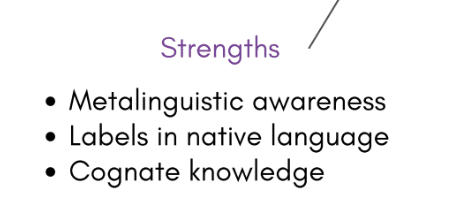
Now, let’s take a look at some of the needs that English language learners may have:
Background knowledge
Background knowledge is generally the thing that's going to be the biggest challenge for English language learners. Dr. Elfrieda has a really interesting point about concepts from different cultures. In narratives, we're more likely to encounter concepts that a different culture might not know. For instance, we have so many books these days of the fractured fairytales and they're so popular.
But who can understand the concept of a fractured fairytale?
Probably, only someone who understands it is a fractured story knows it was taken from the original fairytale. So, if you're going to read a fractured fairytale, you should probably start with the original or give the original version to the kids who don't know the story very well. It’s important to be aware of those types of concepts.
Agency as readers
Another thing that Dr. Elfrieda said to watch out for is to make sure that we don't undermine their agency as readers. Understand that it can be a struggle to learn a second language when you're in school. It's easy to develop the opposite of agency, which is learned helplessness, in this context. However, Dr. Elfrieda offers an alternative to be developing in our students--agency.

How to create agency
One of the simplest ways to build our students’ agency is to point out how much they've already learned. For instance, when we're doing text sets and working on a theme and we're moving into a new text, we can keep pointing out elements that may be familiar to them.
You could say things like,
“Hey, look at these words that you learned yesterday (or last week), you already learned about seeds and plants. We're going to see those words again and now you'll know what they mean, and we're going to learn some new words.”
So, you will continue pointing out that the words are similar and are related to the same theme. Brag about their accomplishments!
Something else that can help create agency is to make sure that they know how to decode. They have to be able to access the words on the page. Our kids are stumbling on that part, when it doesn't have to be as hard as it often is.
In sum, we need to make sure we're building their background knowledge and the sense that they can do this work. They are powerful agents of their own learning process.
One of my goals with this series expanding on Dr. Freddy's book, Teaching Words and How They Work, is to share free resources that help build knowledge. How can we access the fabulous resources at TextProject.org and other places without being overwhelmed by all that there is to choose from?
I hope the following selections will fit into the frame of teaching vocabulary knowledge through connected networks that we've been emphasizing this whole series. And may these selections make accessing and using these resources doable for the busy teacher!
Resource #1: Beginning Reads
A great resource that I recommend is BeginningReads from TextProject. This is a fabulous resource that offers lots of free texts sets that are based on a theme. Beginning Reads supports teachers (and parents/tutors) in bringing children into reading and is very useful when it comes to teaching vocabulary to English language learners.
Let’s take "Seeds and Plants" as an example theme from Beginning Reads.
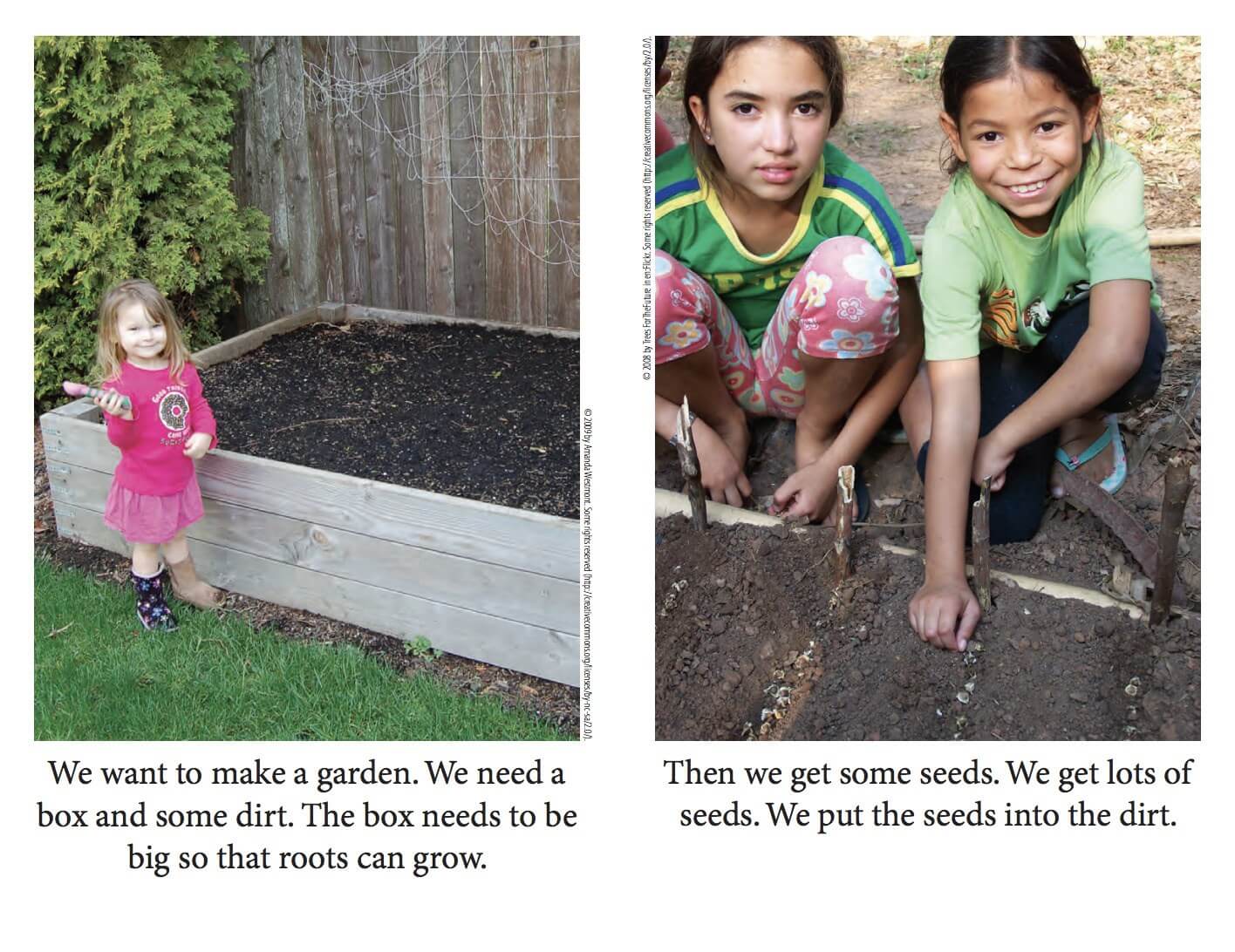
As you can see, there are some nice images and not a lot of text on the page. There's some repetition too such as words like "dirt," "garden," "grow," and "seeds." You'll see that a lot throughout these themed text sets and it really helps to build concepts. You can make networks from these words too.
With the text sets, you can keep reading about the same theme.
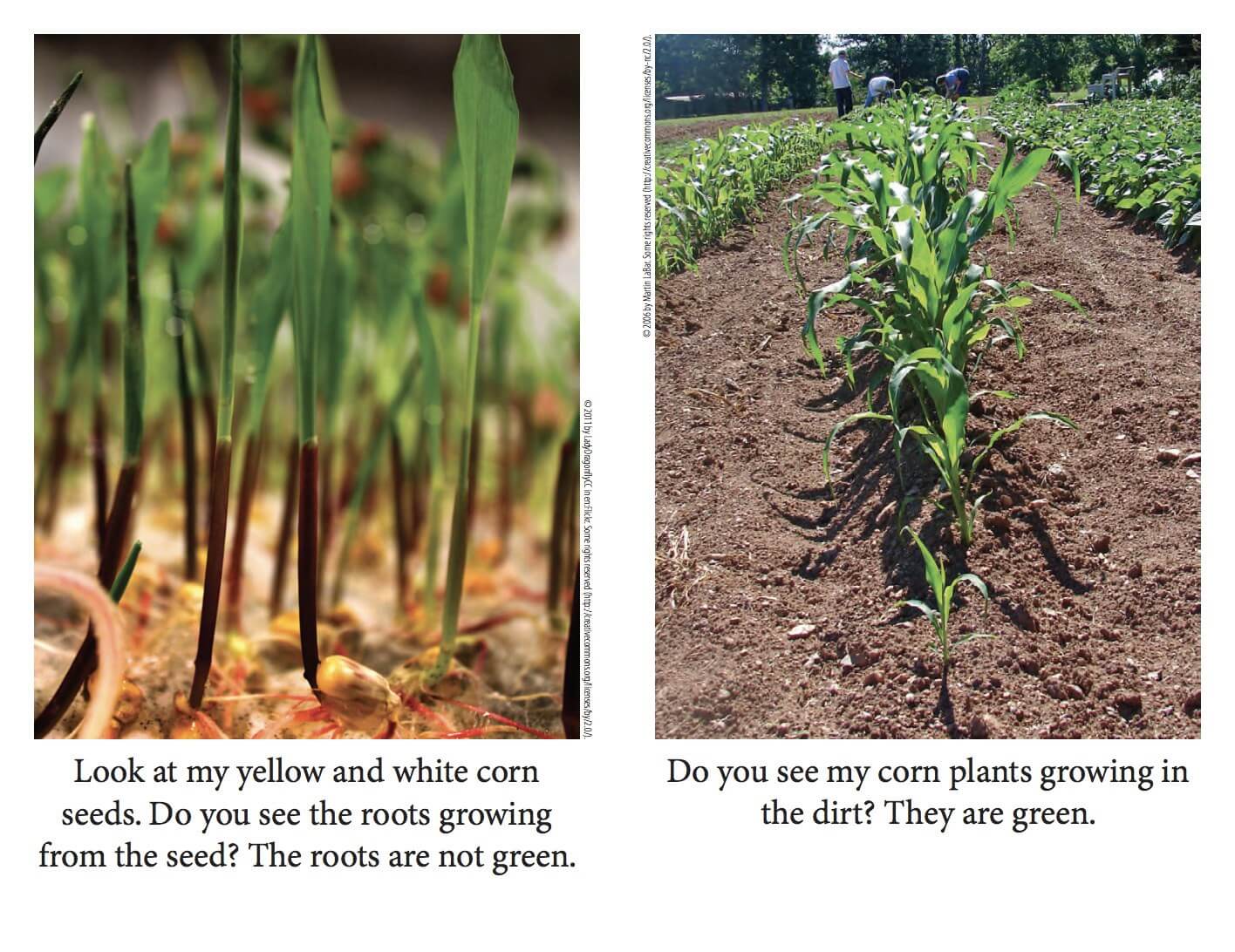
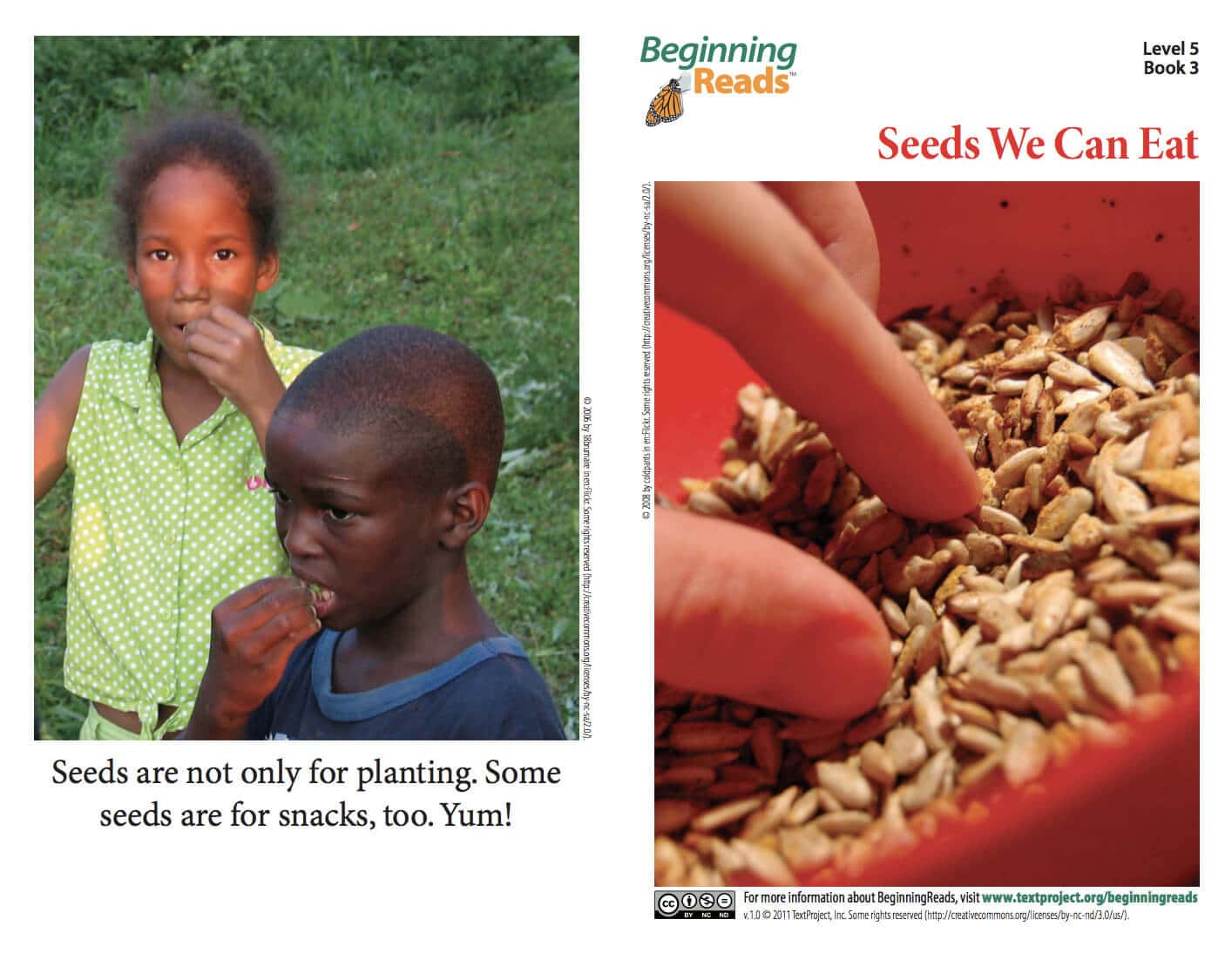
Using a resource like this with repeated words surrounding the same theme is going to help build students’ decoding skills, for one. These repeated words can also help build concepts through networks, and through reading, and re-reading of these types of texts. All of this will pay off for not just our English language learners, but for native speakers too.
Resource #2: Word Pictures
Word Pictures is another great resource from TextProject. Each PDF is a collection of core vocabulary from the 2,500 word families that make up 90% of the words that students see in school.
The great thing about Word Pictures is that they are grouped by topic. You can even pair the text sets that we use at Beginning Reads with these images. You can even find similar topics and themes such as "Plants and Where They Grow" which pairs nicely with the garden theme we looked at above with BeginningReads.
Here's an example of a few pages from the "Plants and Where They Grow" bundle PDF:
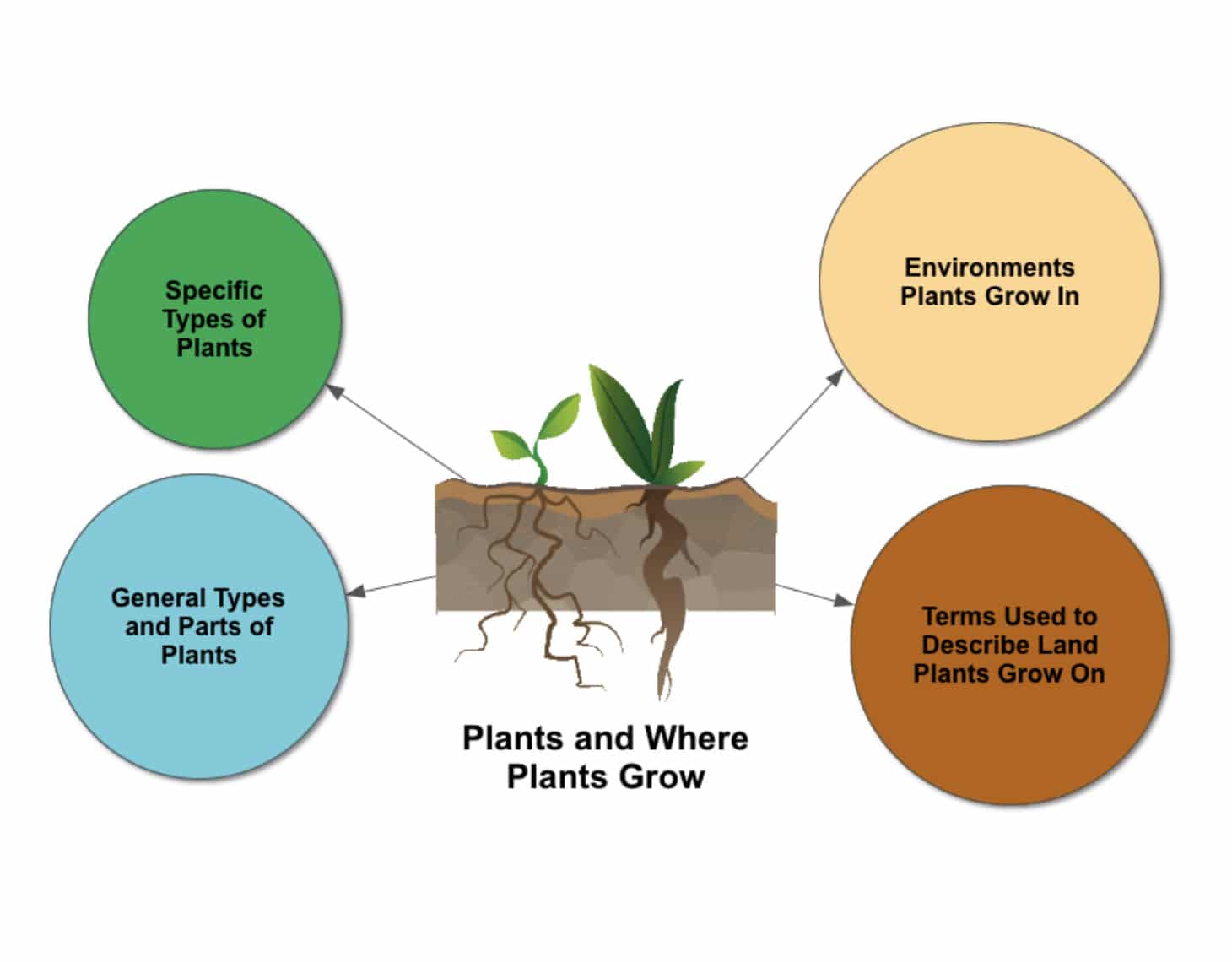
This type of formatting with the branches that lead to relevant topics around plants and where they grow is so useful for teaching students and building networks. You could even build this type of graphic with your students yourself if you like. As you can see, the subcategories are fleshed out with more words.
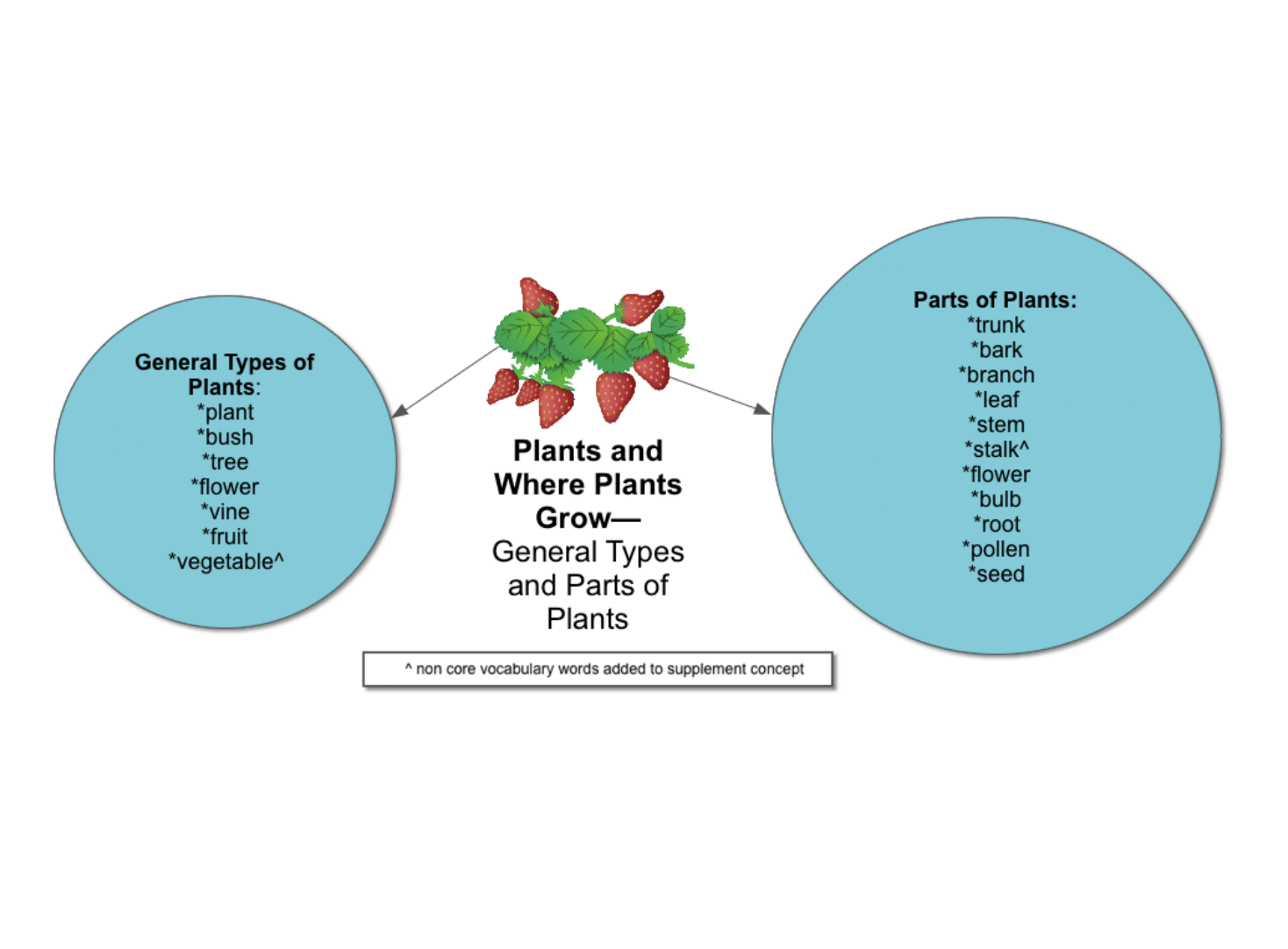
As you dive in further, you can begin to explore even more categories such as "general types and parts of plants." This is another breakdown and gives you the opportunity to talk about the general types of plants and the parts of the plants. The general types of plants would be like, 'plant,' 'bush,' 'tree,' 'flower'. And, the parts of the plants would be 'trunk,' 'bark,' 'branch,' 'leaf' and so on.
You can tell your kids,
“Hey, today, we're going to see the word plant and bush, which we already read about it. But you're going to learn some other words. So, let’s keep listening and as we read for a new word, let’s add it to our chart.”
I like the idea of having a blank chart that the students can keep adding new words to it. If you prefer, you can even print images (like the sample images below) for the kids to sort. They could sort them by spellings, sounds, or categories.



That is just one way to tie these words together for the English learner who may be very new to the English language.
Resource #3: Article-A-Day
Article-A-Day helps to improve students’ comprehension by building their background knowledge. Again, you can stick to the same theme you’ve been working on. For the sake of this post and remaining consistent, I’m going to stick with the theme of plants, but there are many other themes to choose from.
Each downloadable PDF comes with a selection of different passages. Each one covers a relevant topic based on the theme you’ve chosen and they’re very short passages too, most being around 70 to 155 words (but this varies depending on what theme you choose).
Here’s an example from the "How Do Seeds Grow?" passage:

As you can see, there are some repeated words such as ‘seed,’ ‘plant,’ and ‘dirt.’ This passage could easily be paired well with Beginning Reads, maybe for when they're further down the line, or maybe students can read it as a group.
You can find passages like this for kindergarten, first-graders, second-graders and so on. It’s a great resource and you have the freedom to pick and choose passages that you want to use with different students and filter the passages by reading level.
You can take all three of these resources from Beginning Reads, Word Pictures, and Article-A-Day and pair them together to help create networks using themes, and to keep drawing out students' knowledge.
Bonus Resources!
I have some more bonus resources I want to share with you including some great podcasts and videos to help support the background knowledge and the building of the concepts, particularly for our English language learners.
1. Brains On podcast!
Brains On podcast is a great resource where you can find podcast episodes on trees, seeds, carnivorous plants, and so on. They are really polished podcast episodes with lots of sound effects and children and adults dialoguing together. So, it's very child friendly, but it's also teaching concepts and they are really powerful. So, I encourage you to check out the Brains On podcast, they have a really long episode list to choose from. So, you’ll have no trouble finding episodes on the theme that you’re currently working on with your students.
2. SciShow Kids videos
I love SciShow Kids because they make really high-quality videos for kids and you can simple show them to your class. The videos are short but rather fast-paced, which helps to grab the children’s attention. You can always replay the video more than once if you like. The videos are very interactive, entertaining, and they reinforce the things that the students are reading. So, I encourage you to check out SciShow Kids if you're doing anything about science at all.
Book Recommendations
We've got to give our kids the vocabulary of science, social studies, art and music so that they can comprehend for the tests, but also just for things in general in life. There are a wealth of resources from your library and/or online when it comes to finding great books that stimulates their interest and engagement.
Here are some well-known examples of books based on the theme of plants. These books really reinforce that concept of seeds and plants and so on. So, if you’re focusing on the theme of plants and gardening, these books are fantastic resources to help build your students background knowledge even further:
- From Seed to Plant, Gail Gibbons
- How a Seed Grows, Helene Jordan
- Magic School Bus Plants Seeds, Joanna Cole
- Up in the Garden and Down in the Dirt, Kate Messner
- Lola Plants a Garden, Anna McQuinn
These are all great books, but you can always find others in the library or wherever you prefer to find books related to specific themes. You can combine the books with the other three resources I mentioned above. You could have a graphic organizer that you can gradually fill out based on the words that the students are finding. If they do independent reading time, they could pull from these books that are coming from the library so that they are still reading on the topic and can continue building their content knowledge.
I share these examples about gardening and seeds just to remind us of how trade books on a theme are a delightful source for building our students' background knowledge and networks of words.
As we began with here, we need to really think about decoding and linguistic comprehension and/or listening comprehension in our instructional time. We're doing a great job of developing decoding here at Reading Simplified, so please look into that more if you aren't sure you've got great word readers yet.
If you want to find out more about how just three activities can streamline your reading instruction AND accelerate your students' reading achievement, check out our on-demand online workshop – 3 Activities a Day to Keep Reading Difficulties Away.
What is your favorite resource that we discussed in this post? Let me know in the comments and if you have any suggestions of your own, drop them below!





